Peach (Prunus persica) is an economically important temperate fruit. Peach trees grow where the climate is mild. The USA is a major Peach-producing country. They grow in California, Washington, South Carolina, and Georgia.
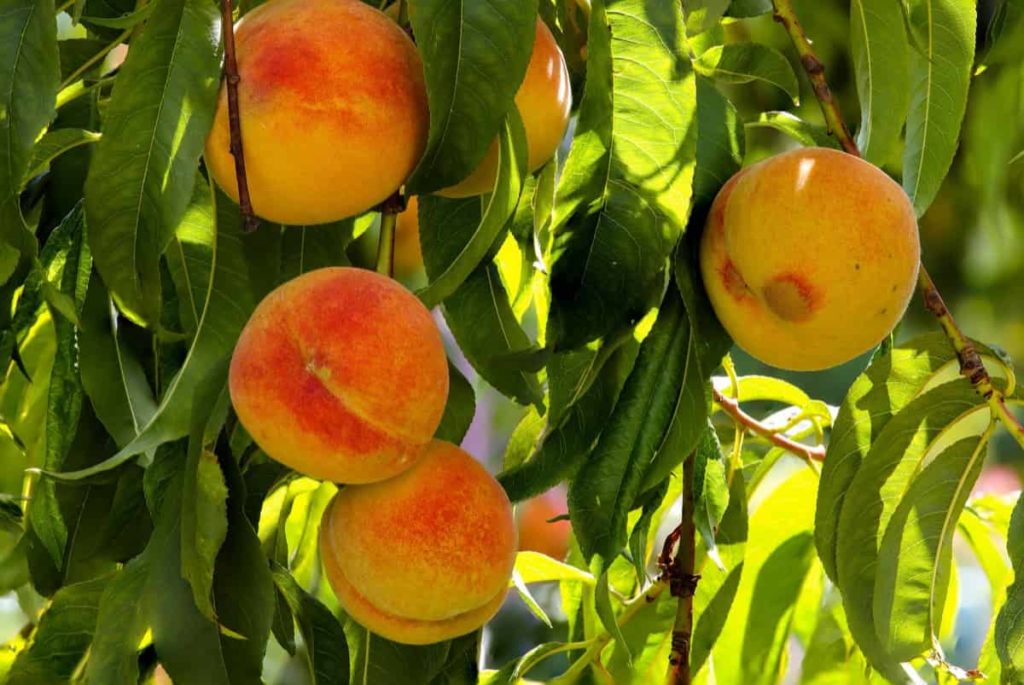
How to start peach farming in the USA from scratch
What type of soil do Peaches grow best in?
- Preparing the soil before planting will significantly improve the performance of your Peach tree and promote healthy new growth. Test your soil before and every year after planting to determine if it lacks essential minerals or nutrients.
- Peach trees prefer slightly acidic soil pH ranging from 6.0 to 6.5. Anything lower or higher and the tree will still grow, but its yield and health may be adversely affected. The trees like sandy loam soil and demand good drainage. If soil drainage is poor, digging in compost, sand, or peat moss can help increase drainage capabilities.
Where do they grow Peaches in America?
The top four Peach-producing states are California, South Carolina, Georgia, and New Jersey. California is a major producer of fresh and processed Peaches, while South Carolina and Georgia primarily produce fresh Peaches. Georgia has significant production and marketing advantages, primarily due to its proximity to eastern markets and favorable prices due to the production of early crops and high-quality fruits.
Almost all Peaches grown in Georgia are sold in the fresh wholesale market, with a small percentage sold at roadside markets. Total US Peach production is over 690,000 tons per year. With such a large annual harvest, the US Peach industry has grown to about $600 million. Although 20 states grow Peaches for commercial use, the ten most notable Peach-producing states include:
| Georgia | Pennsylvania |
| South Carolina | New Jersey |
| North Carolina | Idaho |
| Florida | Colorado |
| California | Michigan |
In case you missed it: Top 20 Steps to Boost Peach Yield: How to Increase Fruit Size, Quality, and Production
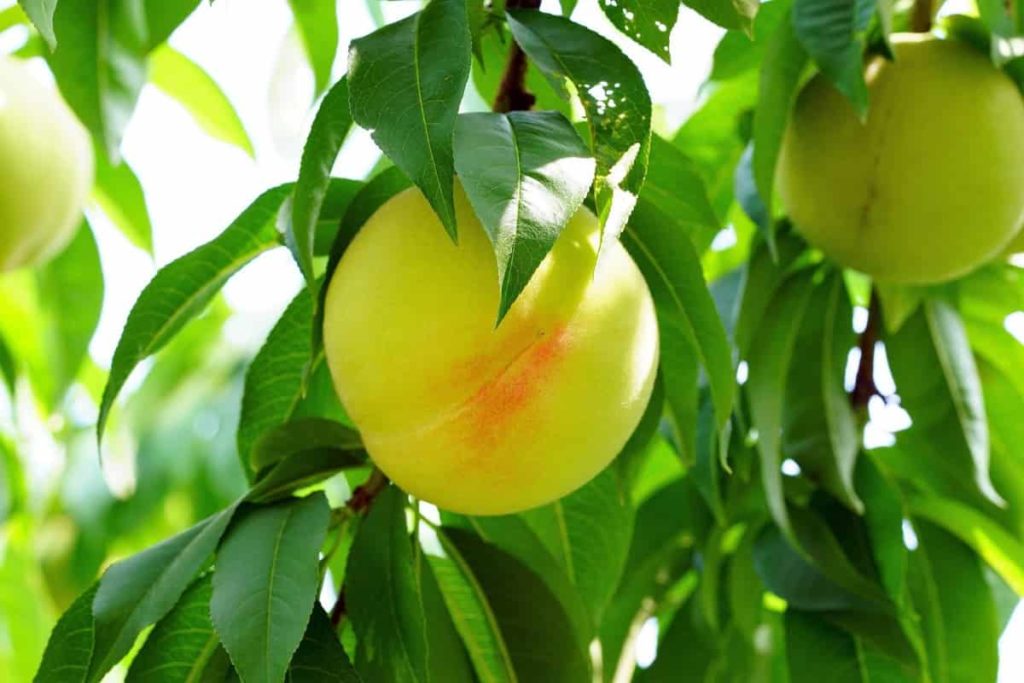
What conditions are needed to grow Peaches?
- Choose a planting site in full sun. A very sunny and sheltered location is ideal. Aim for an area with well-drained sandy soil with a soil pH level between 6 and 7; if the soil has poor drainage, plant a Peach tree in a raised garden bed or container filled with sandy, fertile soil or potting mix.
- Fertilize the Peach tree in early spring with a slow-release fertilizer. For best results, choose a fertilizer that is high in phosphorus and low in nitrogen.
- Prune Peach trees annually to increase fruit production. Peach trees bear fruit on second-year wood, meaning proper pruning this year affects your crop yield the following year.
- Prune trees in early summer during the first, second, and third years of the tree’s life. After the third year of planting, prune in late April, and maintain the tree’s shape by cutting off shoots growing from the tree’s center.
What climate is best for Peaches?
- Important considerations in finding a garden site include soil drainage and type, water quality, air drainage, site history, and market access.
- Peaches are very sensitive to waterlogged soil, so good to excellent internal soil drainage is essential for the trees’ long-term survival.
- The idea is sandy loam topsoil with a subsoil at least 18 to 24 inches deep with a red, well-drained clay subsoil. A subsoil that is dull in color, blue, gray, or mottled usually has poor drainage characteristics and is not satisfactory. Subsoil and topsoil should be relatively fertile and have adequate nutrient and water-holding capacity but should be particularly permeable to water, air, and root movement.
How do you increase Peach production?
- Peach trees do best in areas not previously planted in fruit orchards. Old orchard sites should not be replanted for at least three years because of soil-borne disease problems.
- Immediate planting in a site free of standing wood, especially post oak, is not recommended because of the risk of soil-borne pathogens such as post oak root rot.
- It is important to know how the crop will be marketed to select Peach varieties and orchard sizes correctly. Some of the best orchard locations are relatively remote areas where picking or retail is impossible. Wholesale marketing usually results in somewhat lower prices but is an important alternative when large plantations are planted.
- Peaches are highly perishable, and there is little flexibility in finding alternative markets once the harvest begins.
How do you propagate a Peach?
In Peach fruit cultivation, propagation is done by rootstock and grafting.
Grafting of Peach Plants – To plant Peach seeds, 1-year-old rootstock should be cut about 5 cm diagonally, 20 cm above ground level. The second lower cut should start 2/3 of the way from the top of the 2 cm long diagonal cut. It will create a tongue-like structure on the rootstock. A similar cut should match the cut on the rootstock at the bottom of the lineage.
Increase rootstock for Peaches – It is propagated by seeds to increase the rootstock. These seeds must be kept in the sand (in moist conditions) for three months for stratification. The seeds should be treated with Theoria (5 gm per liter of water) and GA3 (200 mg per liter) for good germination and vigor. Sow Peach seeds 5 cm deep and 12-15 cm apart. Keep a distance of 20 cm in the row. Sown beds should be lightly watered and covered with dry grass. The best season for sowing is October-November.
What is the best season for Peaches?
- Thanks to the weather, with so many varieties grown in many regions across the United States, you can have fresh-picked fruit year-round. But summer is Peach picking season, usually from May through late September.
- Peach season refers to the time to pick and enjoy Peaches. Depending on the climate, the Peach season can be anywhere between April and October. Typically, Peaches are in season during the summer, the perfect time to eat al fresco and feast on fresh fruit.
- A Peach’s inner flesh comes in three colors: yellow, white, and the less common red. Yellow-fleshed Peaches are most common in the United States, with a balanced sweet and tangy flavor. However, white-fleshed Peaches are common in Asian countries. And recently, their demand has increased across the United States. White-fleshed Peaches have less acidity and lack the tangy flavor that yellow Peaches exhibit.
What is Georgia’s Peach season?
Georgia’s Peach season is from mid-May to mid-August.
How do you manage a Peach tree?
- Planning and preparation before starting any garden is the surest way to succeed with your crop. Peach trees require flowering hours (600 chilling hours for low-cold varieties and 900 hours for hardy varieties). Peach trees can bloom early in the spring, so areas that receive frost after mid-April should not be used to establish an orchard. Peach trees also need adequate heat to ripen their fruit properly.
- Peach trees are self-pollinating; therefore, all the trees of the same cultivar can be planted together for ease of harvesting. One of the important practices for Peach trees is fruit thinning. It allows the trees to produce more colorful fruit. The average distance between each fruit should be about six inches.
What are the different types of Peaches in the USA?
Peaches are divided into three groups: freestone, clingstone, and semi-freestone. Classification refers to how the flesh of the fruit adheres to the pit. Popular varieties grown in USDA hardiness zones 8 through 10 include Santa Rosa, Red Beauty, Red Top, Elegant Lady, and O’Henry. There are mainly two types of Peaches, clingstone and freestone. With clingstone Peaches, the flesh clings to the “stone” (pit) of the Peach, making it difficult to separate.
Because clingstone varieties retain their flavor and texture during processing, they are more suitable for canning and value-added products. The pit of a freestone Peach separates from the flesh, making it ideal for fresh consumption. Freestone Peaches are generally larger than freestone Peaches, with a firmer, less juicy texture. Although usually eaten fresh, these Peaches can also be frozen and dried.
In case you missed it: High Density Peach Planting – A Full Guide
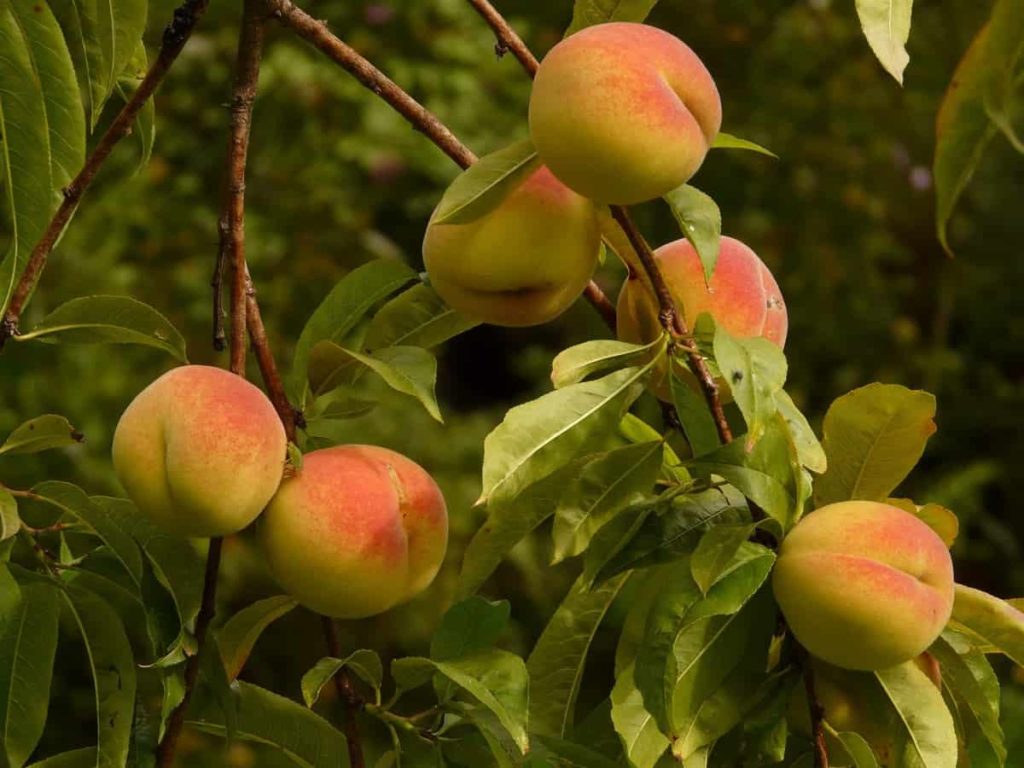
Which zone is best for Peaches?
- Peach trees can grow in USDA zones 4 through 9 but do especially well in zones 6 and 7.
- Peaches like moderate temperatures generally grow best in USDA growing zones 5a through 8a. However, you can choose colder or heat-tolerant varieties to expand the growing zones 4 and 9. Peaches tolerate humid conditions, but excessive moisture can encourage fungal diseases.
When to fertilize Peach trees in the USA?
- Fertilize a new Peach tree in early spring (usually March). Apply a slow-release complete fertilizer that is low in nitrogen (which promotes leaf growth) and high in phosphorus (which promotes root growth). We want the roots to be well established before the rest of the tree takes off. Spread the fertilizer around the tree to the farthest-reaching branches (dripline) on the ground. Follow label directions, but you’ll probably apply about half a cup of 5-10-5 the first year. Fertilizing will encourage about 10 to 18 inches of growth during the active growing season.
- Pull competing weeds as they appear and maintain a weed-free zone of about 3 feet around the tree. You may have to protect the young tree from damage by deer and rabbits, and if it is weak and leggy, you may need to support it with wire and stakes for a year or two.
How to plant Peach trees in the USA?
- Late winter or early spring is the best time to plant a Peach tree. Thus it takes an entire growing season to become established.
- Choose a cultivar suitable for your climate and plant it in a sunny, sheltered location. A slightly elevated spot is better than a depression where the frost freezes. For a bare-root tree, ensure the hole you dig is large enough to give the roots plenty of room to spread. Water it deeply and mulch around the root zone to seal that moisture.
- Stake the tree immediately after planting. Peach trees are self-fertile, so you don’t need to plant more than one to produce fruit. If you want to start a small garden, ensure adequate spacing, so they don’t overshadow each other as they mature. Plant standard Peaches about 18 feet apart and dwarf Peaches five feet apart.
What irrigation techniques are commonly used for Peach trees?
- Peach trees in Florida are irrigated by micro-sprinklers, usually one emitter per tree. Micro-sprinklers and these different flow rates and irrigation coverage are available in the market. Generally, micro-sprinklers should cover 50% or more of the area under the tree canopy.
- Peach trees need 30 inches of water during the growing season. Irrigating less frequently than deep soaking is better to allow water to penetrate the entire root zone. It can be done using a drip system, soaker hoses, or hand watering. Avoid using sprinklers to dry the tree canopy, avoid plant diseases, and minimize fruit exposure to untreated irrigation water. It is very important to keep new Peach trees well-watered during establishment. However, overwatering damages the roots and makes the tree susceptible to disease. When watering established trees, irrigation water should be applied every 7 to 14 days (depending on soil type and heat index) and penetrate to a depth of 18 to 24 inches.
- Florida Peaches ripen in late April and May when natural rainfall is low. Peach trees need at least 1 inch of water per week to achieve normal fruit quality and size. Trees may need more in sandy soils. Irrigate as needed to supplement rainfall. Never allow Peaches to become visibly stressed.
Which fertilizer is best for Peach trees?
- Feed your trees with a granular 8-8-8 or 10-10-10 citrus fertilizer that contains additional nutrients Peaches need, such as iron and zinc. Feed the trees in three equal applications: in late February, May, and July.
- Apply a total amount of fertilizer equal to 1 cup each year of the tree’s age, up to 9 cups annually. Never fertilize after July. You run the risk of encouraging new growth.
How do you fertilize Peach trees in Texas?
Fertilize only when active growth occurs. Once Peach trees are in full production — usually in the fourth growing season — apply phosphorus and potassium according to soil and leaf tissue test recommendations. Most orchards with mature Peach trees need 50 to 60 pounds of actual nitrogen (N) per acre per season.
What is the best training system for Peach?
Peaches are usually trained in an open center system. Cut back newly planted trees to about 30 inches in height, just above a lateral branch. Choose 3-4 laterals with wide-angle curves evenly spaced. Trained fruits are easy to harvest and can be squeezed into small orchards. Space-saving cordons allow for growing multiple varieties, even in a small garden.
When should I prune my Peach tree in California?
In California, Peach trees are typically harvested in January. First, clean the tree, removing leftover fruit, twigs, dead branches, and leaves. Because Peach trees bear fruit on 1-year-old wood, they need to be pruned more severely than other fruit trees.
How should Peach trees be pruned?
Peach trees are among the fastest-growing fruit trees. They bear fruit on second-year wood, so cut back last season’s growth about halfway to the outermost bud. It will focus energy on producing fruiting buds. Peaches require heavy and regular pruning because the fruit only bears on the previous season’s growth. During initial bearing, 20-30% of the linear growth of shoots should be removed. The best time to harvest is the last week of October. Water sprouts that come below the graft union are periodically removed.
How do I control weeds from my fruit trees?
- Weed control is an important task in Peach cultivation. Irrigation and fertilization cannot control the harmful effects of severe weed competition. This is especially true with first- and second-year trees.
- Historically, weeds were controlled by discing and hand digging. Still, this method is not recommended because of irreversible damage to the topsoil from erosion and through the garden in wet weather.
- Most orchards’ most effective floor management system consists of shredded, native sod with a weed-free strip under the trees. Weeds in the strip are controlled chemically. Gradually increase the weed-free strip from 3 to 4 feet in a first-year garden to 10 to 12 feet in a mature garden. Chemical weed control manages weeds more effectively for longer periods and at a lower cost when used properly. Chemicals used in weed control can harm trees if used incorrectly. Read and then follow all label directions carefully when using herbicides.
In case you missed it: Peach Fruit Farming; Planting; Care; Harvesting
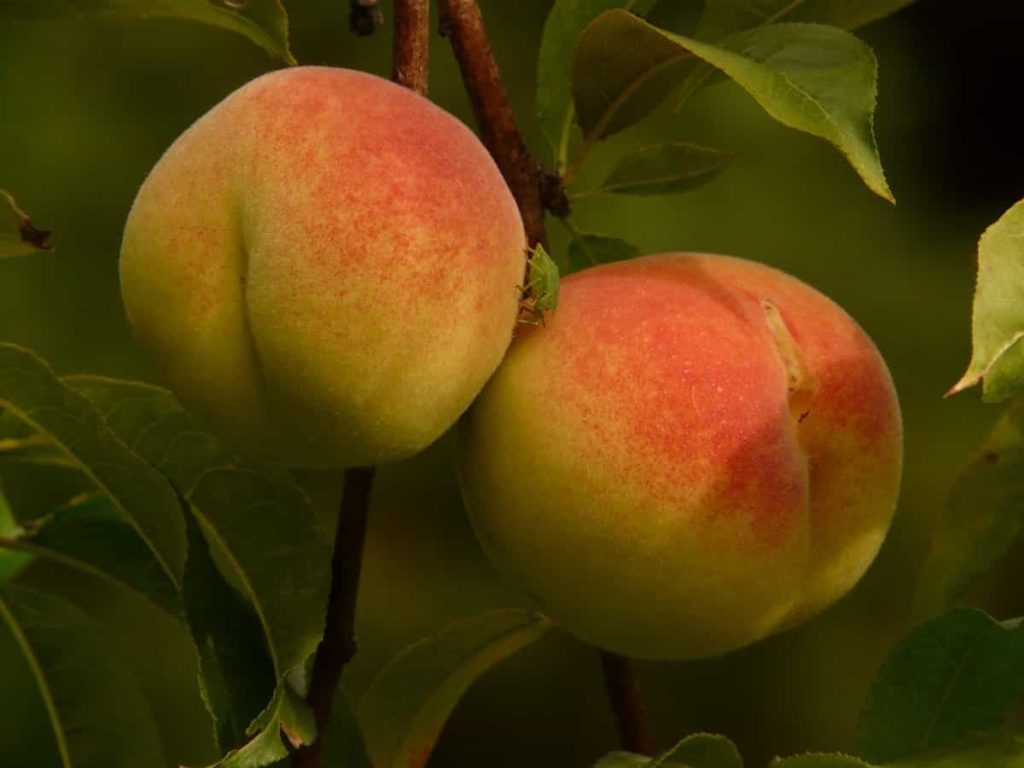
What are Peach pests and diseases?
Some pests and diseases damage Peach trees and fruit in Texas. Major pests include San Jose scale, large and small Peach tree borers, plum curculio, and cat-facing borer. In some cases, the presence of pest populations and harmful levels of infestation can be monitored through trapping. Serious diseases include scabs, brown rot, bacterial spot, post-oak root, and cotton root. Pest and disease problems are few in Far West Texas, but they are enough to warrant control measures. Commercial and homeowner spray schedules are available at local county extension offices.
How do you treat Peach tree pests and diseases?
It is important to manage the disease with Peach trees, especially Peach rust. Frequent summer rainfall in Florida can provide favorable conditions for fungal diseases such as Peach rust. If your tree falls over due to disease, it will suppress flowering, produce fruit at the wrong time of year and become susceptible to frost.
You can manage the disease by applying general fungicide sulfur or some products like Oxidate or Serenade, weekly or bi-weekly. Fungicides will also help with Peach scab problems. The scab will not affect the flavor or texture of the inner flesh but the texture of the fruit’s outer skin. Squirrels and raccoons can also become a problem as the fruit ripens. Once the fruit begins to color, you can net your tree to protect it from hard-working critters.
What do you need to keep the Peach tree healthy?
- Peach trees require regular pruning, fertilizing, and spraying to stay healthy and productive.
- Keep the ground around your tree free of grass and weeds compete for water and nutrients, and mulch generously.
Why are Peaches so important to Georgia?
However, the fruit got its name during the Civil War when soldiers from various states picked Peaches from trees around the battlefield and were drawn to their deep flavor. Georgian Peaches became known for their superior taste, appearance, and overall quality.
Where do they grow Peaches in the US?
According to the USDA, peaches are grown on more than 14,500 acres on 2,600 farms in the northeastern United States. Pennsylvania typically produces about 40 million pounds of Peaches with an annual value of about $20 million. About 4,000 acres of land in Pennsylvania are currently devoted to Peach production, but that’s down about 40 percent due to tree felling due to Peach pox virus (PPV). Peach acreage is slowly increasing, especially in south-central Pennsylvania.
How do you increase Peach production?
- Reduce crop load by intensive harvesting measures in late January and February.
- Reducing crop load by thinning flowers or small fruits first.
- Do not damage the backs of Peach trees to increase size.
How is Peach marketing done in the USA?
Depending on the Peach type produced (commonly referred to as “cultivars”), Peaches can be sold from late July to mid-September. Peach fruits can be sold directly to consumers through markets and roadside stands or wholesaled to packers. There is also the possibility of selling Peaches for processing, but this is usually a completely different market that involves growing culling-type (rather than freestone) Peaches. Peaches sold at farmer’s markets or roadside must be of the highest quality.
It will ensure repeat customers year after year. Direct marketers require a variety of cultivars so as not to disrupt the marketing season. These types of markets can be very time-consuming and financially rewarding. Wholesale marketing of Peaches is usually done by selling to fruit packers, who usually grade and package the Peaches for the fresh market. Before ordering trees from a nursery, explore your marketing options so that you order cultivars that best fit the expected demand.
In case you missed it: How to Start Apple Farming in USA: A Step-by-Step Planting to Harvesting, and Production Guide
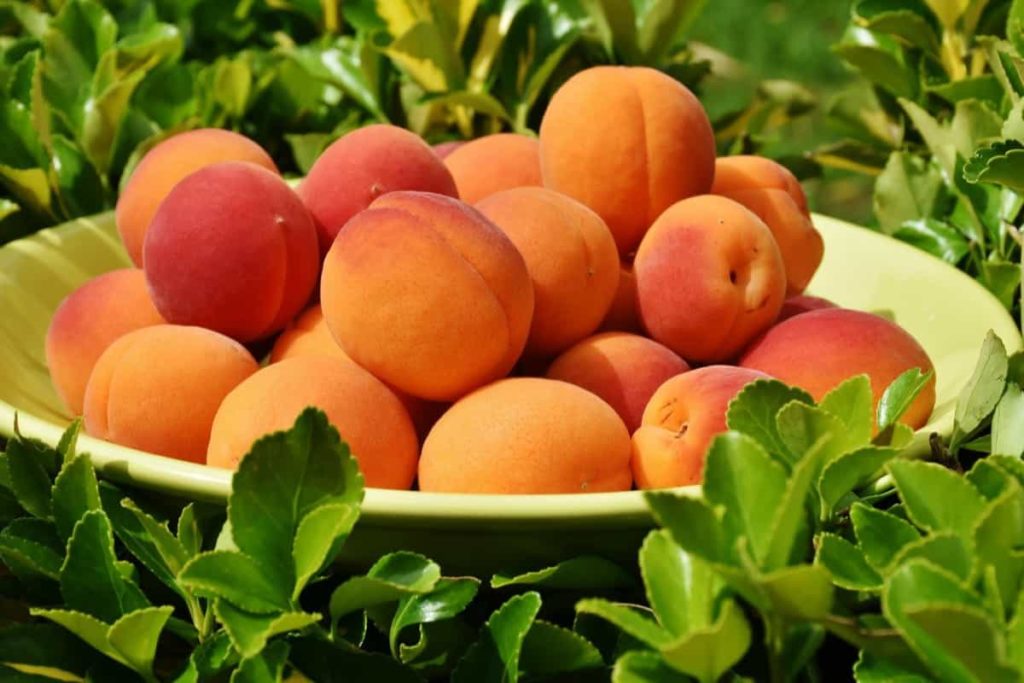
How is Peach harvested?
A young tree (not grown from seed) begins to bear fruit two to four years after planting. After their brilliant pink spring blooms, Peach trees will produce many small green Peaches in the early summer months. In addition to the natural fruit drop at this growth stage, you must also thin the crop or face the disappointment of walnut-sized fruit at harvest.
Remove all but the largest fruit from each branch, leaving at least six inches between fruits. Harvest time varies by Peach variety, but the Peaches usually reach their peak ripeness in late June through August. For the ultimate test, pick one and taste it before harvesting the rest of your crop.
Who produces more Peach, SC, or GA?
Yes. South Carolina has more than triple the average amount (in pounds) of Peaches harvested in a typical season in Georgia.
Which state produces the most Peaches?
South Carolina followed with 76,500 tons worth $67 million.
How many Peaches are grown in South Carolina?
During a typical year, South Carolina grows 60,000 tons of Peaches. The next time you’re looking for a great-tasting Peach, buy local and support our South Carolina Peach growers.
Do Peaches grow in Florida?
However, in the United States, many people prefer yellow Peaches, which hint acidic flavor that balances the sweetness. And it’s the yellow Peach that grows best in Florida. Home gardeners south of Fort Meyers can have good luck growing Peaches.
How many Peaches are grown in CA?
California ranks first among American states, producing 5,05,000 tons this year. California Peaches are grown primarily in the San Joaquin Valley and make up more than 99 percent of the US crop.
Can Georgia Peaches grow in Florida?
Peach trees adapt well to various Florida soils as long as they receive good drainage. Hurricane weather proves challenging. Trees are very sensitive to standing water.
In case you missed it: How to Start Cucumber Farming in USA: A Step-by-Step Guide to Planting to Harvesting
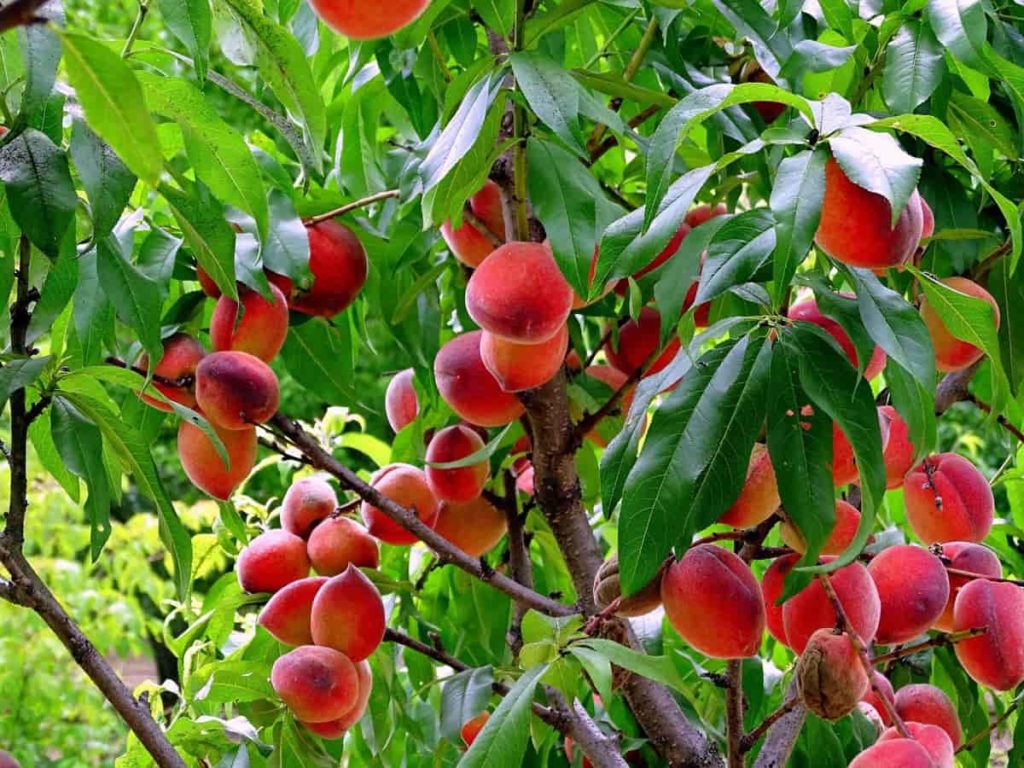
Where do Peaches grow best in the USA?
Peaches are commercially produced in 20 states. The top four Peach-producing states are California, South Carolina, Georgia, and New Jersey. California supplied approximately 56 percent of the United States’ fresh Peach crop and more than 96 percent of processed Peaches.
Conclusion
Peaches can be grown in many of the more temperate climates of the United States and lend themselves well to part-time farming operations. California, South Carolina, Georgia, New Jersey, and Pennsylvania are Peach-producing states in the United States. New York grows 2,000 acres of Peaches, more than a quarter in the eastern part of the state. Above are the important things you must know before starting peach farming in the USA.
- Economical Aquaculture: A Guide to Low-Budget Fish Farming
- 15 Common Planting Errors That Can Doom Your Fruit Trees
- How to Make Houseplants Bushy: Effective Tips and Ideas
- Innovative Strategies for Boosting Coconut Pollination and Yield
- Pollination Strategies for Maximum Pumpkin Yield
- The Complete Guide to Chicken Fattening: Strategies for Maximum Growth
- Natural Solutions for Tulip Problems: 100% Effective Remedies for Leaf and Bulb-Related Issues
- Revolutionizing Citrus Preservation: Towards a Healthier, Greener Future
- Natural Solutions for Peony Leaf and Flower Problems: 100% Effective Remedies
- Maximizing Profits with Avocado Contract Farming in India: A Comprehensive Guide
- Natural Solutions for Hydrangea Problems: 100% Effective Remedies for Leaf and Flowers
- The Ultimate Guide to Choosing the Perfect Foliage Friend: Bringing Life Indoors
- From Sunlight to Sustainability: 15 Ways to Use Solar Technology in Agriculture
- The Ultimate Guide to Dong Tao Chicken: Exploring from History to Raising
- The Eco-Friendly Makeover: How to Convert Your Unused Swimming Pool into a Fish Pond
- Mastering the Art of Delaware Chicken Farming: Essentials for Healthy Backyard Flocks
- 20 Best Homemade Fertilizers for Money Plant: DIY Recipes and Application Methods
- How to Craft a Comprehensive Free-Range Chicken Farming Business Plan
- Brighten Your Flock: Raising Easter Egger Chickens for Beauty and Bounty
- How to Optimize Your Poultry Egg Farm Business Plan with These Strategies
- Subsidy for Spirulina Cultivation: How Indian Government Schemes Encouraging Spirulina Farmers
- Ultimate Guide to Raising Dominique Chickens: Breeding, Feeding, Egg-Production, and Care
- Mastering the Art of Raising Jersey Giant Chickens: Care, Feeding, and More
- Ultimate Guide to Raising Legbar Chickens: Breeding, Farming Practices, Diet, Egg-Production
- How to Raise Welsummer Chickens: A Comprehensive Guide for Beginners
- How to Protect Indoor Plants in Winter: A Comprehensive Guide
- Ultimate Guide to Grow Bag Gardening: Tips, Tricks, and Planting Ideas for Urban Gardeners
- Guide to Lotus Cultivation: How to Propagate, Plant, Grow, Care, Cost, and Profit
- Agriculture Drone Subsidy Scheme: Government Kisan Subsidy, License, and How to Apply Online
- Ultimate Guide to Raising Araucana Chickens: Breed Profile, Farming Economics, Diet, and Care
- Bringing Hydroponics to Classroom: Importance, Benefits of Learning for School Students
- Ultimate Guide to Raising Polish Chickens: Breed Profile, Farming Economics, Diet, and Care
- Ultimate Guide to Raising Australorp Chickens: Profile, Farming Economics, Egg Production, Diet, and Care
- Silkie Chicken Farming: Raising Practices, Varieties, Egg Production, Diet, and Care
- Sussex Chicken Farming: Raising Practices, Varieties, Egg Production, Diet and Care
- Homemade Feed Formulations for Livestock: Discover Cost-effective Starter to Finisher Feed Recipes